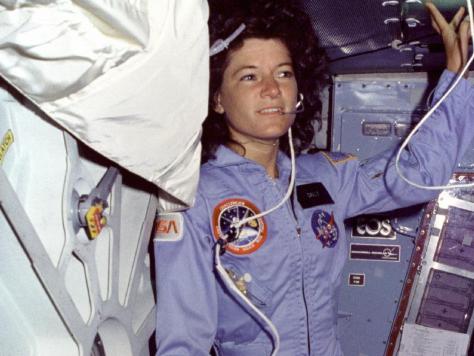Sally Ride, the first American woman to travel into space, has died aged 61, 17 months after she was diagnosed with pancreatic cancer.
“Sally’s historic flight into space captured the nation’s imagination and made her a household name,” Sally Ride Science foundation said in a statement.
She blasted off in the US space shuttle Challenger in June 1983.
Sally Ride was not the first woman in space – that was Soviet cosmonaut Valentina Tereshkova in June 1963.
Since her first mission in 1983, more than 45 women from the US and other countries have flown in space, including two as shuttle commander.
Sally Ride died on Monday in La Jolla, California.

Once an aspiring tennis player, she went on to earn no fewer than four university degrees including a doctorate in physics.
In a statement, President Barack Obama said he was “deeply saddened” to hear about her death.
“As the first American woman to travel into space, Sally was a national hero and a powerful role model,” the US president said in a statement.
Sally Ride was born and grew up in Los Angeles, California, attending Stanford University for master’s and doctorate degrees in physics.
According to her foundation, Sally Ride applied to NASA after seeing an ad in the Stanford student newspaper, calling for scientists and engineers, including women to apply to the astronaut corps.
Sally Ride joined NASA in 1978 – one of 35 people selected as astronauts from a field of more than 8,000 who applied.
She went on her first space shuttle mission on board the Challenger in 1983.
As well as being the first American woman in space, she was also – at the age of 32 – the youngest person in America at the time to go into orbit.
As part of that mission she used a robotic arm which she had helped develop to retrieve a satellite.
Sally Ride reached space again the following year, and was scheduled for a third trip when the Challenger space shuttle exploded in 1986.
The shuttle broke apart just over a minute into its mission, killing all seven of the crew members, and prompting an almost three-year hiatus in the American space programme.
Following the disaster, she served as a member of the presidential commission that investigated the causes of the fatal accident. She also served on a similar board following the Columbia space shuttle, which broke apart during its re-entry to Earth in 2003.
“Sally Ride broke barriers with grace and professionalism – and literally changed the face of America’s space program,” NASA administrator Charles Bolden said in a statement.
“She will be missed, but her star will always shine brightly.”
After leaving NASA, Sally Ride became a professor at University of California, San Diego, and served as a science fellow at Stanford University.
She launched Sally Ride Science, which created science programmes and publications for young students, in 2001. She also wrote five children’s science books.
“The fact that I was going to be the first American woman to go into space carried huge expectations along with it,” Sally Ride said in a 2008 interview.
“I didn’t really think about it that much at the time – but I came to appreciate what an honour it was to be selected,” she said.
Sally Ride is survived by her mother and partner Tam O’Shaughnessy.
[youtube 18sjCbxE_qY]
